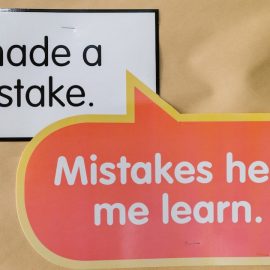

This article is an excerpt from the Shortform book guide to "Alchemy" by Rory Sutherland. Shortform has the world's best summaries and analyses of books you should be reading.
Like this article? Sign up for a free trial here.
How effectively does science predict human behavior? Does reason or irrationality account for the decisions people make? What’s the true secret of persuasion?
Rory Sutherland’s Alchemy: The Dark Art and Curious Science of Creating Magic in Brands, Business, and Life argues that contemporary economic and political theories are flawed. They hinge on reason as a predictor of human behavior, so any attempts to persuade people using reason are doomed to fail.
Continue reading for an overview of this thought-provoking book that could cause you to change the way you and your business operate.
Overview of Rory Sutherland’s Alchemy
Throughout our modern age, science and reason have expanded our understanding of the universe and created technological marvels, yet they’ve proven less successful at predicting and guiding human behavior. Is this because humans are irredeemably irrational creatures? If so, irrationality can be useful as a tool for pushing agendas both big and small—from something as trivial as selling candy bars to something as important as setting national policy.
Rory Sutherland’s Alchemy: The Dark Art and Curious Science of Creating Magic in Brands, Business, and Life was published in 2019. Sutherland suggests that, to solve economic and political problems, we should lean in to people’s penchant for illogical (and even magical) thinking—not to con the public, but to be more persuasive through an understanding of how the human psyche works. Like ancient alchemists who tried to use magic to change lead into gold, business and political leaders can use the power of unreason to tackle the issues of the modern world.
Sutherland is the vice chairman of the British advertising firm Ogilvy & Mather. He joined the firm in 1988 after graduating from the University of Cambridge. At Ogilvy, Sutherland merged commercial advertising with the latest in behavioral science research to pioneer new approaches to “hacking” the human mind—a combination of persuasive forces that has applications beyond the realm of selling products. After all, says Sutherland, the world of advertising is the largest social science lab that the human race has ever produced, and anyone involved with setting economic and government policies ought to pay attention to its findings.
We’ll examine why Sutherland believes that conventional logic and reason fail as predictors and persuaders of human behavior. These failures include the faulty assumptions of standard economics, the peculiar quirks of human perception, and the idea that meaning is more important to the mind than solid fact. We’ll then cover Sutherland’s recommendations on how to leverage the mind’s magical thinking to influence human emotion and behavior.
Along the way, we’ll flesh out Sutherland’s points with practical examples, delve into the underlying research on behavioral psychology, and discuss the implications of leaning into irrational thought as a way to influence the public.
When Reason Fails
To be clear, Sutherland doesn’t attack logic as a tool for scientific understanding, but he warns against using pure rationalism as the only method for guiding policy and business decisions. Humans, after all, are illogical beings, so any solution to human-centered problems must factor unreason into the equation. We’ll look at the fallacies that commonly occur when applying strict logic to human behavior, why modern economics gets on the wrong track, how human perception differs from objective reality, and why the creation of meaning governs human behavior more than statistics or logical facts.
When we rely on classical logic, we use well-defined data points to reach conclusions and achieve clear-cut objectives. Sutherland points out that the world our brains evolved in is more uncertain than that process allows for. Rationalists like to reduce problems to simple approximations that logic can deal with, but in practice, our minds make judgments based on trade-offs, nuance, and a hazy, big-picture understanding of the world.
The irrational ideas and behaviors that our minds come up with aren’t meant to be perfect or even correct—the purpose of the unconscious mind is not to determine the truth of the world, but to promote our survival as a species. It often does so using unfair bias, faulty heuristics, and magical thinking. Sutherland argues that, instead of treating these reactions as defects in the human psyche, our unconscious logic is a lever that we can use to persuade people and influence behavior that’s more powerful than reason alone. Ignoring the unconscious blinds us to potential pitfalls as well as unexpected, “irrational” solutions.
Another issue with using logic to solve problems is that it’s such an effective tool that any commonplace problems that have logical solutions have already been solved. If new problems arise that yield to logic and reason, we’re able to solve them remarkably quickly. As a logical result, the problems we’re left with are the ones that don’t yield to simple logic—from enticing consumers to buy a new brand of hot dog to convincing voters to support a vital government initiative. Unfortunately, says Sutherland, many of our leading economic and political decision-makers are so invested in logic and reason, they’ve blinded themselves to unconventional solutions that don’t fit into the tidy box of assumptions their logic is based on.
The Fallacies of Logic
When applying conventional logic to any situation, your results are only as valid as the assumptions on which your logic is based. Sutherland argues that this is where CEOs, economists, and politicians fail—by misunderstanding where logic fits in the knowledge-generation process and by underestimating the complexity of people and their social interactions.
The first mistake that business leaders and social scientists make is in thinking that logic and reason come before finding solutions when, in fact, the opposite is often true. In the physical sciences—those most associated with hard logic—the most important discoveries are often happy accidents, for which scientists use logic after the fact to explain their observations. Discovery and logical explanation are two separate facets of scientific understanding, and either one can come before the other.
Despite the role that blind luck often plays in advancing our understanding of the world, experts in fields like economics and political theory routinely devalue the importance of random chance and counterintuitive discovery. Sutherland suggests that it’s a common mistake in the social sciences to demand that rational explanations come first, thereby closing the door on counterintuitive discoveries and solutions to problems that sound crazy on the surface.
The next common error Sutherland mentions is when people try to shoehorn the social sciences and business decision-making into the strictly logical framework of the physical sciences and engineering. The latter disciplines rely on universal laws, but Sutherland asserts that human systems are so incredibly complex that universal laws don’t apply. So much of human behavior depends on context cues, selective perception, and unconscious, evolutionary responses that any attempt to use absolute rules to determine how and why humans act the way they do is certain to produce erroneous results. Nevertheless, the idea that human behavior can be explained by simple statistical models is the underlying basis of much economic theory.
Economics Is Wrong
Sutherland insists that, for the most part, the study of economics is completely detached from the realities of human behavior. Instead, economists simplify human interactions so that they’ll fit into mathematical models, then use those models to make logical predictions that don’t account for the underlying messiness of human behavior. Despite the work of scientists such as Kahneman to debunk traditional economics, Sutherland contends that economists and business leaders still rely on two long-disproven ideas—that people are consciously aware of their motivations and that they make rational decisions based on achieving their stated desires.
Faulty “rational” assumptions don’t just harm the public, they do a disservice to the businesses that make them. For instance, many industries rely on market research to determine what products and services to offer, but market research rests on the assumption that people know the reasons behind their decisions. To find the real reasons for consumer behavior, Sutherland argues that businesses need to drill deeper than superficial market questionnaires, sometimes asking questions to which consumers and businesses think they already know the answers. Sutherland argues that unconscious motivations are consumers’ real driving factors, and any logical explanations they give for their choices are rationalizations provided after the fact.
Despite the documented power of the unconscious, many economic models are based on the assumption that people make conscious, rational decisions to maximize the chances of achieving what they want. Sutherland writes that nothing could be further from the truth. Many of the choices people make seem completely irrational on the conscious level—it’s only when we understand our unconscious drives that human behavior starts to make sense. Unfortunately for economists, we can’t jot down our unconscious motives on a survey or enter them as data points into a spreadsheet, which is why unconscious factors are largely ignored by decision-makers in business and government.
Perception Versus Reality
According to Sutherland, the key to leveraging the unconscious mind is to manipulate people’s perception of events, much like a magician performing sleight of hand. This works because, as neuroscience has shown, human perception can differ greatly from objective reality. Sutherland discusses the importance of understanding human perception, the functions that psychological biases serve, and how meaning and language are vital tools for engaging perception to positive advantage.From an economic standpoint, understanding human perception is key because in many cases, it’s cheaper to employ psychological solutions than to engineer costly “practical” fixes. In Sutherland’s words, it’s simpler to change people’s perception of reality than to change reality itself. To do this requires identifying the psychological causes at the root of human issues and desires, then creating the perception that a need has been addressed. The flipside of this coin is that “logical” solutions to real-world issues won’t be effective if they don’t also create the right perception. Right or wrong, how people see a problem has to be dealt with before the problem itself.
Sutherland says that, as annoying as the difference between human perception and objective reality can be, our cognitive biases evolved for a reason. For example, our brains place disproportionate importance on anything that stands out as unusual. This derives from our survival instincts—in the wild, any unexpected sound, movement, color, or smell might signify danger, and our minds reflexively focus and ramp up our attention on that particular thing. Even if our conscious reason might say there is no threat, our unconscious mind says, “Better safe than sorry.” Sutherland says that it’s a waste of time to argue with the unconscious—it’s far more productive to engage with it instead.
Why Meaning Matters
The key to understanding human perception is to recognize that our minds focus on what objects and events mean to us much more than their physical details. Sutherland writes that this particularly applies to how we value and react to things. The magic in engaging the unconscious mind lies in using the most unlikely, illogical, and sometimes outright silly tactics to alter how people perceive something’s value, and thereby change their behavior. This is where unreason triumphs over logic—by making an object or event seem outlandish, you instinctively draw the mind’s attention to it and trick people into reframing their perception.
There are many ways to perform this magic trick, but Sutherland argues that the main ones involve language. Language is what we use to convey meaning—for instance, by drawing attention to specific details of a product, to highlight one aspect of a political candidate over others, or to reframe a negative experience into a positive. Even the most glaringly illogical uses of language and meaning can have an outsized effect on how people perceive the world, and by extension, the experienced reality that our perceptions create.
The Uses of Illogic
Sutherland says that in any situation involving human beings, it’s essential to acknowledge and tap into the instinctive, unconscious reasoning behind how people make decisions. Whether you’re selling a product, planning a business strategy, or trying to convince people to eat healthier food, the “magic” of unreason can be far more persuasive than logical arguments and facts. Three so-called “irrational” mental processes that we’ll explore include the use of subtle cues to signal trustworthiness, the placebo effect in which the mind can trick the body, and lastly the mind’s tendency to make choices that are “good enough” to achieve a given want, rather than striving for the best possible outcome.
In Signaling We Trust
The first persuasive tool we’ll consider is signaling—the things we do to demonstrate our intent and trustworthiness to others. The human mind uses signals as a shorthand from which to form broader judgments about people, groups, and institutions. By being deliberate about the signals you send, whether or not they seem rational on the surface, you can gain people’s trust and nudge them in favor of whatever message you’re trying to convey, even if they don’t fully understand why they trust you and believe what you say. Sutherland explains the traits that make signals strong and effective, how signals are employed in the business world, and why signaling sometimes incurs short-term costs in the pursuit of long-term gains.
Whatever it is that you want to signal—that you’re the right candidate for a job, that your toaster design is better than your competitor’s, or that your social media empire doesn’t really want to take over the world—Sutherland says words and logical arguments aren’t enough. A powerful signal that people will notice must:
- Be costly to the person or institution sending the message
- Show some degree of creativity in the message’s creation
- Include some measure of attention-getting nonsense
Persuasive Absurdity
Talk is cheap, and people realize this. Sutherland says the cost in money, time, or resources to create a unique message shows a certain level of confidence and commitment that a simple verbal argument cannot convey. Likewise, the human brain is programmed to ignore the ordinary or expected. For a signal to cut through the noise of everyday life, it must contain an element of the unexpected—and nothing stands out so much as the absurd.
The idea that signals should contain some degree of nonsense is most easily demonstrated in advertising, writes Sutherland. Consider how many advertisements today contain a ridiculous or humorous element that has nothing to do with the product being sold, whereas more ads from decades ago focused on conveying logical reasons why a certain product or service was better. The ridiculous ad accomplishes two things—it grabs your attention in ways a logical ad wouldn’t, and it shows that the business running the ad believes enough in its product or service that it’s willing to spend the money, time, and creative effort to tell you about it in an amusing way.
Show That You’re Serious
Powerful signals don’t have to be silly, but they have to incur a cost to be believed. Sutherland gives the example of a business that spends extra money providing customer service above and beyond its industry’s standard. This may not make logical sense from the perspective of short-term economic gains, but it does make sense if you assume the goal is to build unconscious trust in your consumers—leading to customer loyalty and increased profits in the future. Consciously or not, people recognize when another person or a business puts aside their short-term, selfish interest. Since humans are a social species, we’re hardwired to notice and believe any signals that demonstrate commitment to the community as a whole.
Placebo Power
Another common phenomenon in which the mind and body behave counter to reason is what’s known as the placebo effect—in which, for example, your body reacts to what you think is a drug, even if it’s just a harmless sugar pill. Though using placebos can seem dishonest to the rational mind (aside from their role in medical testing), Sutherland argues that the placebo effect is a legitimate tool we can use to hack our bodies and minds to achieve various beneficial outcomes—whether that’s improved health or a better mental state. To make this case, we’ll look at how the placebo effect works, the characteristics of effective placebos, and how the placebo effect manifests in areas of life beyond the medical field.
Sutherland suggests an evolutionary explanation for the placebo effect. Our bodies evolved to live in harsher conditions than most of us experience in the modern world. For that reason, it didn’t pay to be sick—the body’s immune response to illness temporarily weakens it, reducing short-term survival in the wild. According to this theory, our immune system only gives its full effort if we perceive that it’s safe to do so. A placebo works by telling our body that it’s safe to go into healing mode, and that doing so will likely be successful instead of leaving us vulnerable to predators.
In a sense, taking a placebo is a form of self-signaling. Studies show the placebo effect can induce positive outcomes even if a medication isn’t a placebo at all. Sutherland says this happens when a drug’s marketing campaign highlights one specific effect—for instance, that a specific variation of a painkiller is good for fighting headaches. The drug may be chemically identical to other versions on the market—the only difference being the words on the box—and yet, those who take it may actually feel a stronger reduction in headaches than if they’d taken the exact same drug under a different label. Via the placebo effect, you can signal to yourself the outcome you want, and your body will comply.
The Shape of a Placebo
Sutherland writes that, as with other signals, a placebo’s effectiveness depends on three factors:
- How much the placebo costs
- How rare we believe the placebo is
- How much effort is entailed in taking it
For example, consider a hypothetical herbal supplement that’s supposed to increase your concentration. If it’s cheap, easy to take, and available at any corner store, it won’t be effective because you won’t believe it. However, Sutherland suggests that if it’s somewhat expensive, can only be found at specialty shops, and has to be taken with food, a hot beverage, or only at specific times of day, we’re much more likely to believe in its power, and its “real” effects are more likely to kick in. Don’t think of this as lying to yourself—think of placebos as a way to hack your mind and body systems that you don’t have conscious control over.
Placebos aren’t limited to drugs you ingest. Sutherland argues that many of our ritualized and irrational behaviors send placebo signals to ourselves and others to produce a desired mental state or outcome. One example is a crosswalk button that doesn’t affect an intersection’s light cycle. The button is a placebo for reducing a pedestrian’s impatience, giving them a sense of control, and reducing the chance of them walking into traffic. Other examples include the objectively strange initiation rituals practiced by some clubs and organizations. The ritual triggers a placebo effect to heighten members’ sense of shared community, and the strangeness of it makes your mind take notice.
The Good Enough Solution
The third puzzle piece of the mind that you can leverage when trying to influence people is our unconscious preference for safety over perfection. Much of economics relies on the assumption that when faced with a problem, people work toward a “best possible solution,” but the human brain doesn’t operate that way. Instead, the mind seeks out solutions that are likely to work while minimizing the possibility of failure. It’s a subtle distinction best phrased by the truism, “Perfect is the enemy of good.” Sutherland discusses how the unconscious mind veers away from reason to deal with uncertainty, what form this takes in a practical sense, and how the brain’s desire for a “whatever works” solution can be used as a tool for persuasion.
Logical problem-solving works within the confines of well-defined problems where everything comes down to a handful of easily quantifiable variables. In real life, though, every decision involves uncertainty, which makes logical decision-making exponentially more difficult. However, thanks to evolution, our brains cope with uncertainty far better than any mathematical model. Sutherland contends that in decision-making, reducing uncertainty is our unconscious goal. Rational optimization is impossible in a dark and scary world of unknowns, so instead, our brains try to be mostly right while reducing the odds of being catastrophically wrong.
A World of Trade-Offs
One common way we protect ourselves from a world of uncertainty is to reframe a problem so that instead of asking the obvious question—such as, “What’s the most efficient way to grow as much food as possible?”—we ask an alternate question that’s easier to answer, such as “What’s the safest way to grow something so that I won’t starve in case of a disaster?” Most of the time, we’re not consciously aware of the alternate questions that guide our decisions; therefore, Sutherland writes, these unconscious questions make many of our conscious decisions seem irrational. However, if you identify people’s unconscious needs, you can address them directly in ways that you’ll find are much more persuasive than dry, analytical logic.
People expect life to be messy and that every decision will involve a trade-off. Sutherland says that to win people’s minds, you should play into that expectation, even if “reason” suggests otherwise. If you’re selling a product or an idea that’s objectively better than the alternatives, present it as a trade-off anyway. We’re wired to believe that everything has a downside, so build a narrative as to why that’s the case, even if doing so involves some distortion. If you admit to imperfection while minimizing people’s feelings of uncertainty, you’ll be speaking to the unconscious mind’s happy place. According to Sutherland, that’s the magic to making sales, winning votes, and changing behaviors.
How to Do Magic
Understanding Sutherland’s concepts is different from putting them into practice. The pressure of traditional economics is strong, and to find creative solutions outside it, you have to be willing to experiment with approaches that may seem silly. We’ll show how some of Sutherland’s ideas might be applied in two fictional scenarios—one in which a business owner is trying to move unsold merchandise, and another in which a local politician is trying to revitalize his town. Their solutions include questioning assumptions, changing perceptions, addressing people’s unconscious motivations, and bringing different ideas together in absurd combinations.
Scenario 1: Blind Date With a Beer
In our first example, Kate is the owner of a local pub. As a beer aficionado, she’s built up a stock of specialty imports from around the world, but unfortunately they haven’t proved as popular as she’d like, and most of her specialty beers sit unsold while her customers buy the more familiar brands over and over. Kate’s empirical data says that her customers aren’t interested in imported beers, despite various displays in her pub that logically explain the merits of each brew. Should Kate do the economically prudent thing, dump her unsold stock, and write it off as a loss? Or, as Sutherland might have her try first, can she perform a magic trick to make her customers change their drinking habits?
Kate starts by following Sutherland’s advice and questioning the assumptions her business is based on. Why do people order beer in her pub? Is it because they enjoy specific brands and her bar is the best place to get them? Of course not. If all they wanted to do was drink, it would be cheaper to buy what they want from the local liquor store and drink it at home. Kate realized that her customers’ real motivation for coming to her pub was to socialize and have fun, and that for the most part, which beer they ordered was tangential to that goal. Therefore, to make her imported beers sell, she had to tie them to her customers’ sense of fun and socialization.
Kate announced a new event: “Blind Date With a Beer.” She’d assemble random six-packs of bottles, mask the labels so each one was a mystery, and sell them only to groups of three or more. To make it feel special, she limited the event to only one night a week—signaling scarcity to increase its value. It would be irrational for customers to spend money without knowing what they’d get, but disguising the bottles tapped into the playful fun associated with low-stakes risk and surprise, like a game. By restricting the sales to groups, Kate tapped into the underlying socialization motive that brought people to her pub. After a while, the new event caught on, and Kate’s stock of imported beers found a new clientele.
Scenario 2: Save Our Town, Save Our Team
In our second example, Marcus is a newly elected small-town councilman who promised to revitalize the town’s historic but crumbling business district. Many of the buildings on Main Street are abandoned, and the town can’t afford to buy and restore the unused properties. Several long-time businesses remain, including a furniture store and a restaurant, but stiff competition from a new shopping center on the edge of the city is wearing them down. After a string of new tax incentives fails to attract businesses back to Main Street, Marcus is at his wits’ end. Simple economics says that Main Street is doomed—but according to Sutherland, a little psychological alchemy might turn economic lead into gold.
Marcus finds two psychological keys to work with—the town’s pride in its high school football team and the Main Street restaurant that’s still in business. The two are unrelated except that both are closely tied to the town’s sense of identity, especially for those who’ve lived there their whole lives. Marcus plans to build an emotional link between the survival of Main Street and the football team’s success, no matter how irrational or absurd that concept is. He paints a bleak picture of the kind that Sutherland says we’re primed to believe, but if he can get the town’s residents to associate shopping on Main Street with supporting the football team, it might breathe economic life into the district.
He starts by inviting the football team to the restaurant for a pre-game dinner at the start of the football season, which he then makes into a regular event that more and more people attend to show support. At these dinners, Marcus talks about his memories of Main Street and wonders aloud how the town—and by extension the football team—will survive if the historic district dwindles. Since the town no longer depends on its historic district financially, there’s no logical reason why one should affect the other, but Sutherland would point out that that doesn’t matter. Several residents take the message to heart and form a committee to reinvest in Main Street. By tugging at heartstrings, Marcus turns the tide against cold economics.

———End of Preview———
Like what you just read? Read the rest of the world's best book summary and analysis of Rory Sutherland's "Alchemy" at Shortform.
Here's what you'll find in our full Alchemy summary:
- Why conventional logic and reason fail as predictors of human behavior
- Why irrational thinking is a secret weapon for persuasion
- Examples of how to apply Sutherland’s methods in real life






